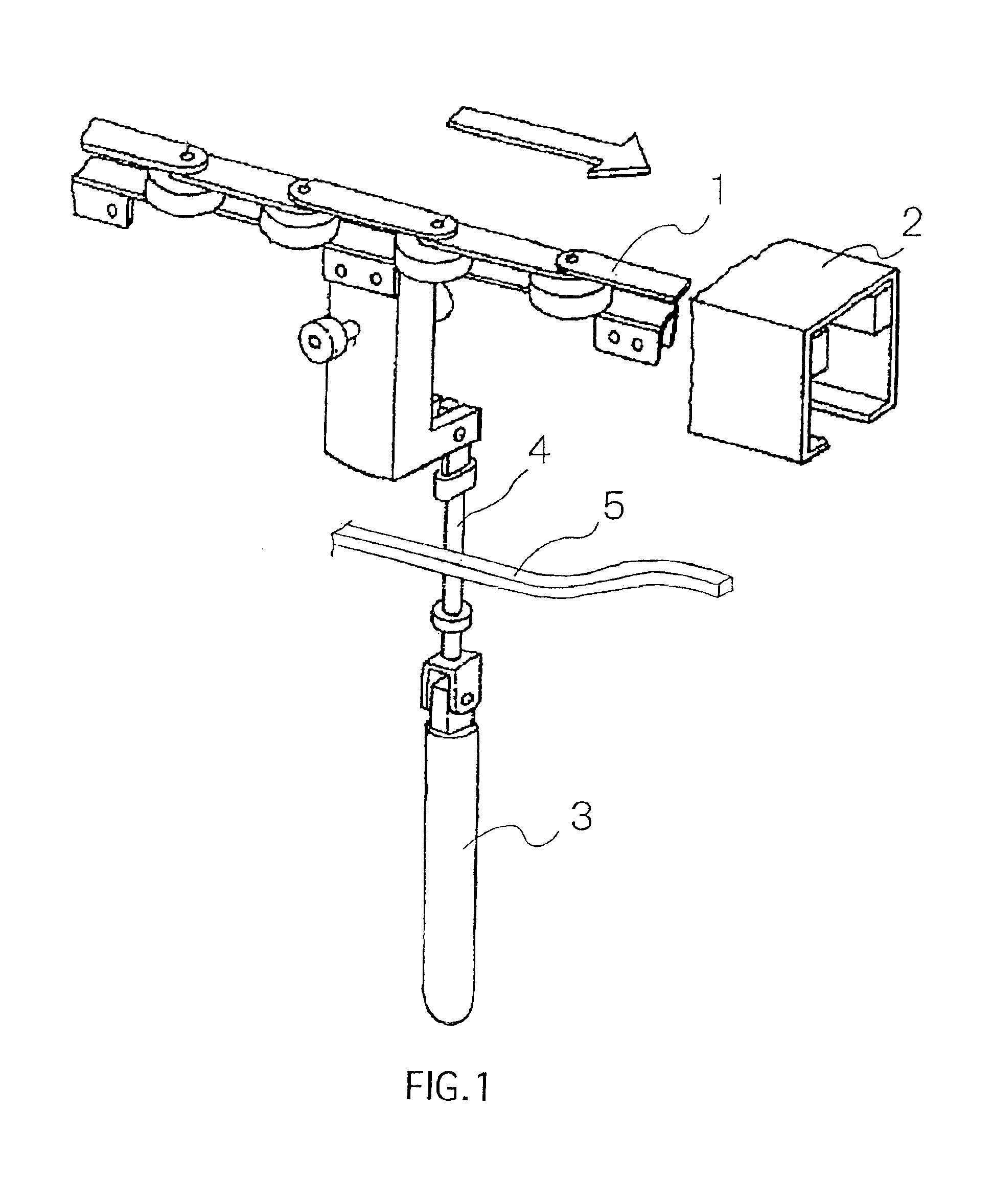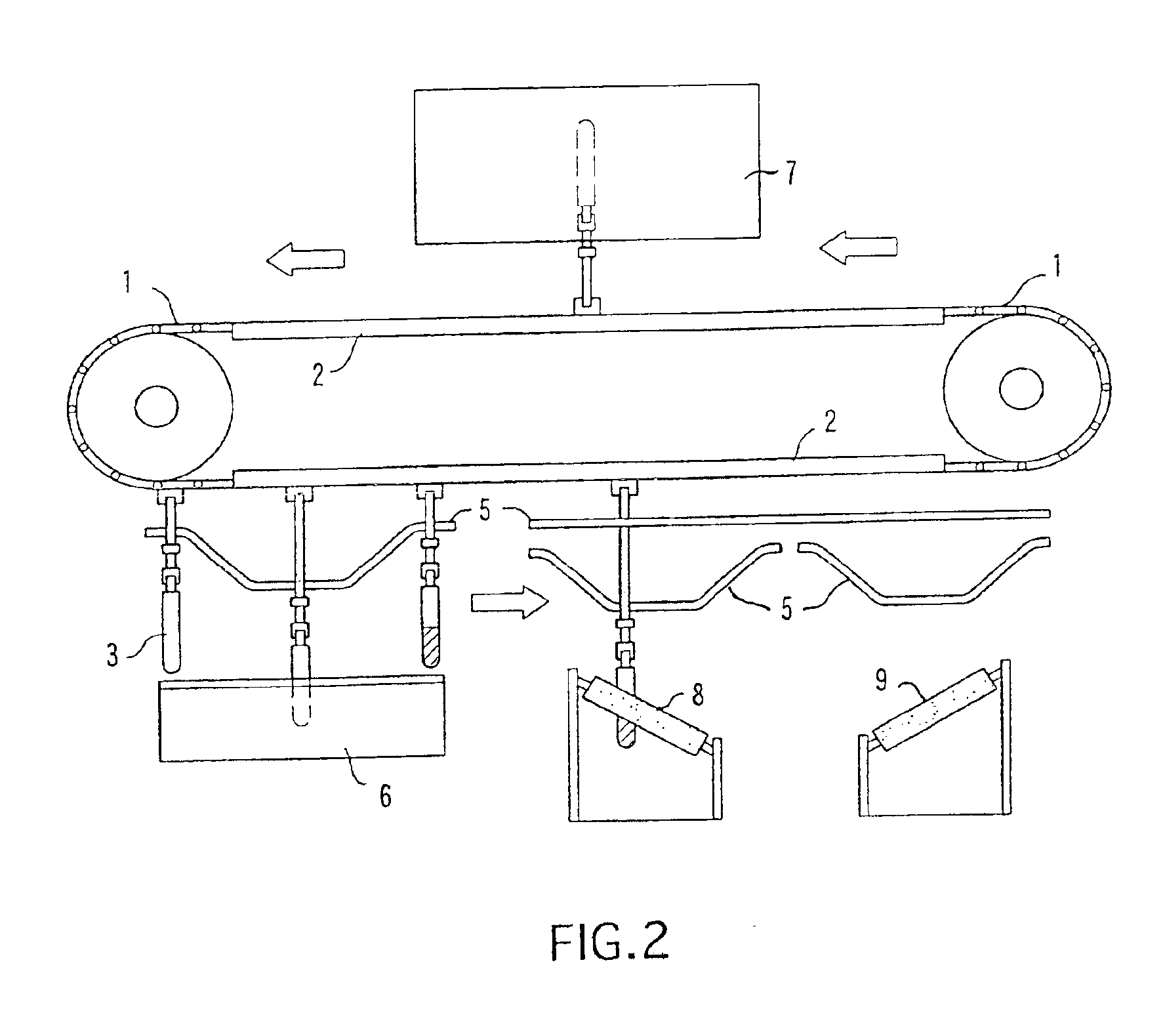Non-adhesive latex products
a technology of carboxylated latex and non-adhesive coating, which is applied in the direction of manufacturing tools, transportation and packaging, and other domestic objects, can solve the problems of extreme thin film formation, and achieve the effects of maintaining the cleanliness of the product to a high degree, convenient donation, and maintaining the cleanliness of the produ
- Summary
- Abstract
- Description
- Claims
- Application Information
AI Technical Summary
Benefits of technology
Problems solved by technology
Method used
Image
Examples
example 1
[0195]The film formed in Comparative Example 1 is leached, released from the former, unwound, dipped in an aqueous solution of polyaluminumchloride (which is an external crosslinking agent) containing 2.5% alumina and immediately taken out. At this time, the film surface already has lost its adhesiveness and has a feeling of smoothness. This film, dried at 70° C. for 3 minutes, is further subjected to a leaching treatment in hot water at 70° C. for 3 minutes, and subjected to a vulcanization treatment in the same manner as Comparative Example 1. The results of the strength test of the film are shown in Table 1. For the adhesion test, the film, which underwent leaching treatment after non-adhesion treatment of the outside surface, was again placed on the former. The film was wound to make test samples. The sample after the adhesion test could easily be unwound.
example 2
[0196]The dipping former was dipped in a solution of polyaluminum chloride (which is an external coagulant) containing 2.5% alumina and used in Example 1 to coat the former, then dried, next dipped in the external coagulant methanol solution 1 and dried. Then the dipping former was dipped in the latex liquid to form a film, then dried at 50° C. for 3 minutes and further subjected to a leaching treatment at 50° C. for 3 minutes. Thereafter, the former was again dipped in the aqueous solution of polyaluminum chloride used in Example 1 in order to prevent the adhesion of the film's outside surface and subjected to a leaching treatment and a vulcanization treatment. The test results on the film strength are shown in Table 1. The sample, after the adhesion test, was able to be unwound easily. This shows that the inside surface of the film contacting the dipping former had become non-adhesive. The outside surface is also non-adhesive, as in Example 1.
example 3
[0197]In this example, aluminum acetate, containing 2.4% alumina was used in place of polyalunimun chloride, was coated on the dipping former by dipping. The latex film was prepared as in Example 2 and was dipped with the former. Table 1 shows the test results on the strength of the film. The film wound in the adhesion test could easily be unwound.
EXAMPLE 4
[0198]Using aluminum nitrate containing 0.2% alumina and a solution containing calcium nitrate tetrahydrate 150 g and methanol 1000 g as an external coagulation liquid and external crosslinking liquid, a film was produced. Adhesion preventing treatment of the outside surface of the film according to the same procedure as in Example 2 was performed. The film thickness was approximately equal to that of Comparative Example 1 and Example 2. The test results on the strength of the film are shown in Table 1. In this case too, as with Example 2, the sample after the adhesion test could easily be unwound.
PUM
| Property | Measurement | Unit |
|---|---|---|
| temperature | aaaaa | aaaaa |
| temperature | aaaaa | aaaaa |
| contact angle | aaaaa | aaaaa |
Abstract
Description
Claims
Application Information
 Login to View More
Login to View More - R&D
- Intellectual Property
- Life Sciences
- Materials
- Tech Scout
- Unparalleled Data Quality
- Higher Quality Content
- 60% Fewer Hallucinations
Browse by: Latest US Patents, China's latest patents, Technical Efficacy Thesaurus, Application Domain, Technology Topic, Popular Technical Reports.
© 2025 PatSnap. All rights reserved.Legal|Privacy policy|Modern Slavery Act Transparency Statement|Sitemap|About US| Contact US: help@patsnap.com



